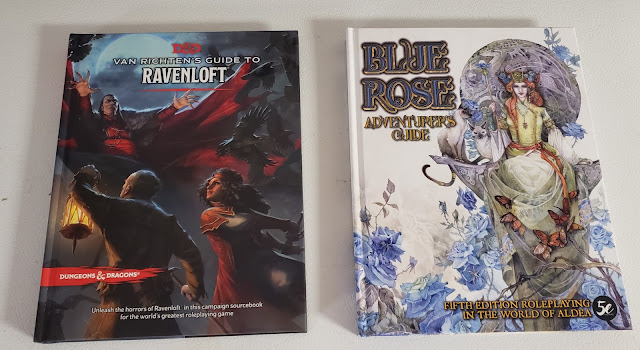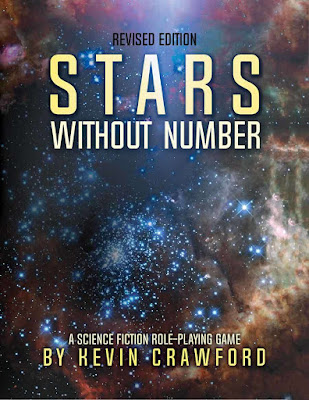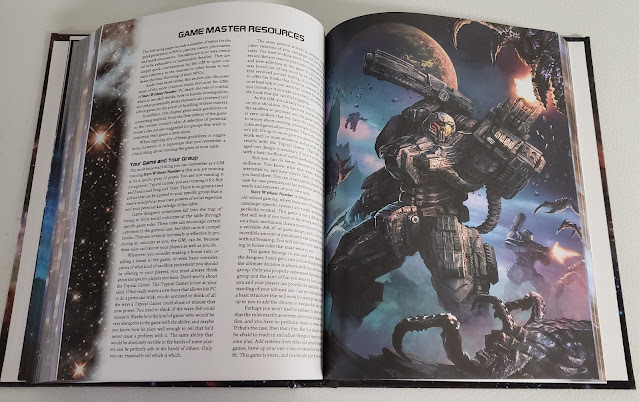Old-School Essentials 3rd Party Publishers by Planar Compass
It has some rather nice products included.
Here are a few of them.
Build or customize your own OSE or Basic-era classes. I covered this book a bit ago.
Hidden Hand of the Horla - T:1
From Appendix N Entertainment
A nice old-school-style adventure where you seek out the tower of the Hand Mage that has reappeared out of legend. It is from R. J. Thompson and is for characters levels 1 to 3. There are some great new monsters here, the Goatfolk are my favorite, and some new to BX/OSE spells that Advanced players will recognize. 27 pages with maps by Dyson Logos. It is a really fun adventure and captures the spirit of the modules of the early 80s very, very well. Buy it for the nostalgia, but run it because it is a great little adventure.
The Chaos Gods Come to Meatlandia
From Knight Owl Publishing
I thought this was an adventure, but it is actually a mini-setting of Meatlandia and the opposing factions. There are meat mages (you really have to buy this to see them) and various types of bards (three in total). So new classes, new magic (15 pages of meat mage spells), a city, new monsters, new magic items, and just some gonzo-level weirdness. I have to say that it is not for everyone, BUT there is an audience that will absolutely love this. Has a solid Dungeon Crawl Classic meets Lamentations of the Flame Princes meets 80s weird horror. If it were a movie Roger Corman would have been the director or producer and Tom Savini would have starred and consulted on the monster effects. The whole thing is 90 pages long so you are getting a lot. Not sure where I am going to use it, but it really begs to be used somewhere. Retooled just a tiny bit could turn it from gonzo to some serious horror. That is the direction I am likely to go.
Barrow Keep: Den of Spies
From R. Rook Games
For starters, you get this product for OSE, 5e, Troika!, and Sharp Swords & Sinister Spells all in the same purchase! So kudos to the authors for that. The main book covers the keep and a host of important NPCs. The characters are all assumed to be young adults living within the Keep. This covers 72 pages. There are also some new monsters in abbreviated stats that can easily be used by any game.
The GM's Scenario packs vary from ruleset to ruleset. 5e is 43 pages and OSE is 55 pages. As expected these GM packs give you scenario seeds, the relevant players/NPCs, and has you go from there. The flexibility of this a crazy high. I can see an enterprising GM make this their central focus for dozens of adventures if not an entire campaign. If you don't want to do that then make it a home base for the PCs and have the occasional "stay at home" adventure. Given how well it is multi-stated use it as a means of moving from one game system to the next. It is extremely well designed.
Get it for one system, but enjoy it with the other three as well. This has made me want to look more into the Troika! RPG.
FULL DISCLOSURE: The author of this, Richard Ruane, is a co-worker and friend of mine, though I did not see that at the time I purchased this.
I should stat up an NPC Pagan witch that lives in Barrow Keep.
A Witch's Desire - Adventure for Old-School Essentials
From Earl of Fife Games
This is a fun adventure dealing with a bargain made by your village and the local Witch of the Wild. She is protecting your village from the deadly winter of the Ice Queen. Now she is asking you for a favor. Great notes on surviving cold weather and exploring in the wilderness. Part hex crawl-ish, part quest adventure. The notes say to make her an 8th level magic-user. I say why not an 8th level witch?
Witch of the Wild
8th level Human Witch, Pagan TraditionStr: 10
Int: 17
Wis: 16
Dex: 11
Con: 13
Cha: 18HP: 25
AC: 9
THAC0: 18Saves
D: 10 W: 12 P: 11 B: 14 S: 13Occult Powers
Familiar: Crow
Cowan: Meepa the Goblin
Herbal healing
Of the LandSpells
First: (3) Call Spirits of the Land, Cure Light Wounds, Glamour
Second: (3) Animal Messenger, Pins and Needles, Seven Year Blessing (Ritual)
Third: (2) Scry, What You Have is Mine (Ritual)
Fourth: (2) Temperature Control, Wheel of the Year (Ritual)
I could certainly use this adventure as part of my War of the Witch Queens.
There are others that I have not purchased yet but plan to.
- Planar Compass Issue 1 (our host for this bundle)
- Hex 15.43 -- The Crypts of the Aimascurs
- Ominous Crypt of the Blood Moss
- Trypilia, Land of Seven Islands, Domain of Meru Issue One
- The Palace of Unquiet Repose (OSE Version)
- Xanadu (this one looks like fun!)
And finally also in this bundle,
The Craft of the Wise: The Pagan Witch Tradition
From The Other Side Publishing
But I assume you know all about this one.
























